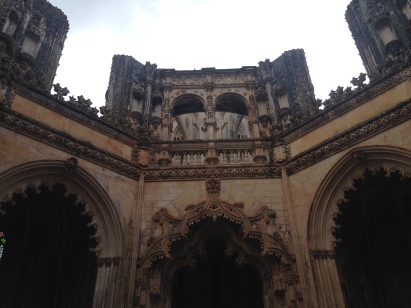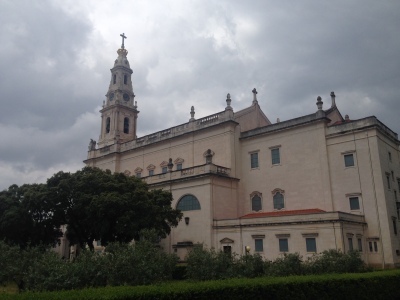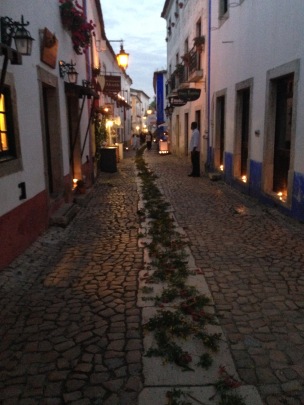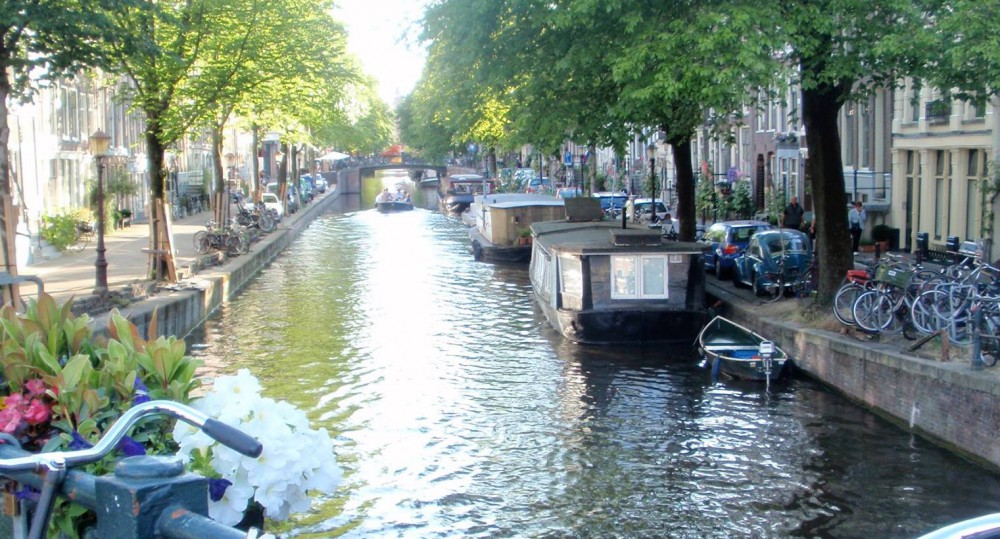Portugal may be best known for its fado music, or its deliciously salty bacalhau, or perhaps for the above-average futbol players that it turns out on a regular basis. On a recent long weekend visit to this lovely country, I discovered another defining trait: roundabouts.
We don’t normally drive much on our travels around Europe; we prefer to stay in the city center and use public transportation. This time around, we wanted to see several inland villages and castles, so a car was the best way to go. Since I am the proud holder of an international driver’s license, I was the designated driver. (An aside: has anyone ever been asked to produce this document for anything? A rental car agency, a law enforcement officer, anything? Is an international driver’s license – valid for only six months – even necessary?) Once we were off the highway, we would encounter a roundabout every 800 meters or so. Some had only two or three exits and could have made do with an intersection. In Lisbon, I had to navigate two concentric roundabouts – an inner and an outer rotary, both with multiple exits. I’ll admit that was not my best bit of driving, but I managed. At least twice, I took the roundabout literally, and just kept driving in circles while my co-pilot did some on-the-fly navigation.
There was another unusual feature of this trip: my dear husband planned almost everything. In conversation with other couples, I have found that the responsibilities for planning a trip fall to one person or the other. In our relationship, I’m almost always the planner. In my husband’s mind, if we have a flight and a hotel, a trip is planned. In my mind, we need a rough idea of the transit system, knowledge of some of the major sites, and a dinner reservation for Saturday night. This time, however, he had places he wanted to visit and had mapped out our route for our four days. I got behind the wheel and went where he and the GPS told me.
Our first stop was the Batalha Monastery, which was breathtaking. The construction began in the late 1300s (!) and the architecture reflects the

The unfinished chapel at the Batalha Monastery
changing styles used over the 150-year construction period. A portion of the church remains unfinished, with the walls opening up to welcome the sky and the weather and the local birds. The Monastery is also the home of the Tomb of the Unknown Soldier from the First World War; the tomb is watched over by guards and by the battered remains of Christ of the Trenches, a statue of Jesus that Portuguese soldiers carried into battle in Flanders. It was a somber and impressive memorial to the losses that Portugal suffered during the Great War.
We drove on to Coimbra, home of the oldest university in Portugal. We enjoyed a great meal at a local restaurant, and discovered that the owner spent more than 15 years living the Netherlands. We also enjoyed the Portuguese price point: a bottle of wine, two entrees, a shared starter and dessert only cost 42 Euro…a big difference from an average night out in Amsterdam. At the recommendation of our hotel concierge (who was also our bartender, although he preferred “mixologist”) we made time in the morning to visit the university. The student prison is no longer in use, but many of the buildings, including the former palace, are still used for formal university ceremonies.
From there, we went to Fatima, a Catholic pilgrimage site where the Virgin Mary appeared to three children in 1917. (For the non-Catholics or the public school kids, you can get up to speed here.) In spite of my many years of Catholic education, I know Fatima best from the annual Easter airing of the 1952 film The Miracle of Our Lady of Fatima. Every Easter Sunday of my childhood, we’d visit family friends before we went to my grandparent’s house. Every year, we’d arrive at their home near the end of the movie, just in time for the scene when Mary appears in a great ball of light, causing the residents of Fatima to panic and assume that the sun was falling.

The Basilica at Fatima
Fatima today includes a basilica, an enormous plaza, and a series of chapels where masses are held almost non-stop. There were also some odd elements, including beeswax candles in the shape of different organs or body parts. These were sold as offerings; you could purchase the candle that matched whatever illness you had, and then cast the candle (prayerfully) into a large fire. We also witnessed a number of women making the journey from the far end of the plaza to the Visitation Chapel, following a white marble path that they traversed on their knees. A penance of some kind, I assume, but it’s not my particular brand of Christianity. I don’t think that God is terribly interested in intentional suffering.
We moved on to the walled city of Obidos, not knowing that our interactions with the Virgin Mary were not quite behind us. As we sat in a plaza enjoying an afternoon drink,

Obidos prepares for the procession of Mary
we noticed that the locals were busy with flowers and greenery and votive candles, decorating the town. We learned that in commemoration of the 100th anniversary of the end of Mary’s visitations in Fatima, a statue of Mary had been traveling around Portugal since 2017. That night it was Obidos’ turn to host Our Lady. Again, processions and statues of saints in glass boxes are not really my thing, but the preparations were lovely. The small town was quiet. Every home and shop put out candles or statues of Mary, and flowers lined the road. A sense of reverence and anticipation settled over everyone as the sun set. Eventually, the procession moved silently through the streets and we went on our way.
In the morning we drove to Lisbon and had a relaxed day that mostly involved sitting in the Praça do Comércio, or wandering the very hilly streets. We dove into Portugal’s lesser-known culinary heritage and had dinner at a Goan restaurant, where we were told (in our case, reminded) that vindaloo is originally a Portuguese dish.
The other unusual feature of this trip was that my husband occasionally busted out his beginner Portuguese, which I found impressive and delightful. He ordered our lunch in Fatima with no hesitation, and while I know it can be stressful for him to speak Portuguese, the waiter didn’t notice a thing, and we got exactly what we ordered. Mission accomplished!
This was our third visit to Portugal. Years ago we spent time in Lisbon and the Azores, and more recently we went to Porto with some friends from the U.S. This time, we saw more of the inland villages and the landscape. On every visit, I’m amazed by the diverse beauty of the country and the relaxed and easy attitude of the people. Many travelers overlook Portugal, and that’s their loss. Each time we go, I discover more reasons to return.
